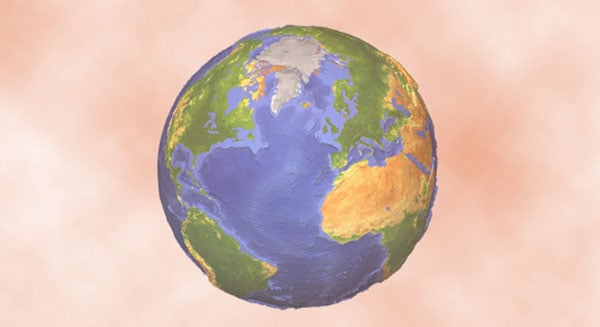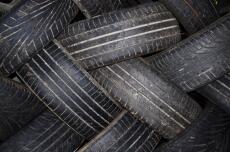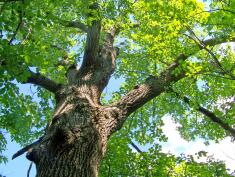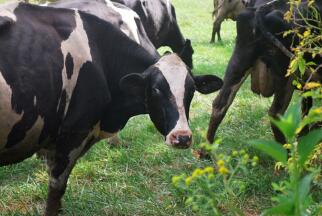10 Things You Can Do to Halt Climate Change
3 minute read

Want to do your part? Below are tips on how to reduce carbon emissions and help stop climate change. Every little effort helps and adds up to a whole lot of good.
 Replace a regular incandescent light bulb with a compact fluorescent light bulb (cfl)CFLs use 60% less energy than a regular bulb. This simple switch will save about 300 pounds of carbon dioxide a year.
Replace a regular incandescent light bulb with a compact fluorescent light bulb (cfl)CFLs use 60% less energy than a regular bulb. This simple switch will save about 300 pounds of carbon dioxide a year.
- Drive less, carpool or walk more: Avoiding just 10 miles of driving every week would eliminate about 500 pounds of carbon dioxide emissions a year.
- Recycle or Reuse more: You can save 2,400 pounds of carbon dioxide a year by recycling half of the waste your household generates. You can recycle almost anything for eg: paper, aluminum foils, cans, newspapers, clothing and shoes. Most products we buy cause greenhouse gas emissions in one or another way, e.g. during production and distribution. By recycling you can help in reducing what goes into landfills and incinerators.

- Check your tires: Properly inflated tires mean good gas mileage. For each gallon of gas saved, 20 pounds of carbon dioxide are also never produced.
- Use less hot water: It takes a lot of energy to heat water. You can use less hot water by installing a low flow showerhead (350 pounds of carbon dioxide saved per year) and washing your clothes in cold or warm water (500 pounds saved per year) instead of hot. Choose energy efficient appliances when making new purchases. Look for the Energy Star label on new appliances to choose the most energy efficient products available.
- Avoid products with lot of packaging: When you buy products with a lot of packaging, you will end up in throwing the waste material in the garbage, which then will help in filling landfill sites and pollute the environment.
- Adjust your thermostat: Use the thermostat to lower the temperature. The easiest and most cost effective advice is simply adjusting your thermostat up in the summer and down in the winter. Install a programmable thermostat. Programmable thermostats will automatically lower the heat or air conditioning at night and raise them again in the morning. They can save $100 a year on your energy bill.
- Turn off electronic devices: Turn off electronic devices when you are moving out for a couple of days or more. Unnecessary usage of electronic appliances will not only save fuel i.e. coal by which we get electricity but also increase the lifetime of your gadgets. Do not leave appliances on standby -Use the "on/off" function on the machine itself.
 Plant a tree: A single tree will absorb one ton of carbon dioxide over its lifetime. Shade provided by trees can also reduce your air conditioning bill by 10 to 15%. The Arbor Day Foundation has information on planting and provides trees you can plant with membership. Planting trees can help much in reducing global warming than any other method. Protect and conserve forest worldwide. Forests play a critical role in global warming: they store carbon. When forests are burned or cut down, their stored carbon is release into the atmosphere - deforestation now accounts for about 20% of carbon dioxide emissions each year. Conservation International has more information on saving forests from global warming.
Plant a tree: A single tree will absorb one ton of carbon dioxide over its lifetime. Shade provided by trees can also reduce your air conditioning bill by 10 to 15%. The Arbor Day Foundation has information on planting and provides trees you can plant with membership. Planting trees can help much in reducing global warming than any other method. Protect and conserve forest worldwide. Forests play a critical role in global warming: they store carbon. When forests are burned or cut down, their stored carbon is release into the atmosphere - deforestation now accounts for about 20% of carbon dioxide emissions each year. Conservation International has more information on saving forests from global warming.
- Spread the awareness/ Stay informed: Always try your best to educate people about global warming and its causes and after affects. Tell them how they can contribute their part by saving energy that will be good for the environment. Gather opportunities and establish programs that will help you to share information with friends, relatives and neighbors.
But wait. There is one more!
 Eat less meat and dairy products. This is one of the MOST effective ways to reduce our personal carbon footprint and our personal negative impact on the environment. According to the Food and Agriculture Organization of the United Nations, agriculture is responsible for 18% of the total release of greenhouse gases worldwide (more than the entire transportation sector!). Between methane, a greenhouse gas and deforestation livestock are one of the major contributors to climate change. Read more.
Eat less meat and dairy products. This is one of the MOST effective ways to reduce our personal carbon footprint and our personal negative impact on the environment. According to the Food and Agriculture Organization of the United Nations, agriculture is responsible for 18% of the total release of greenhouse gases worldwide (more than the entire transportation sector!). Between methane, a greenhouse gas and deforestation livestock are one of the major contributors to climate change. Read more.
